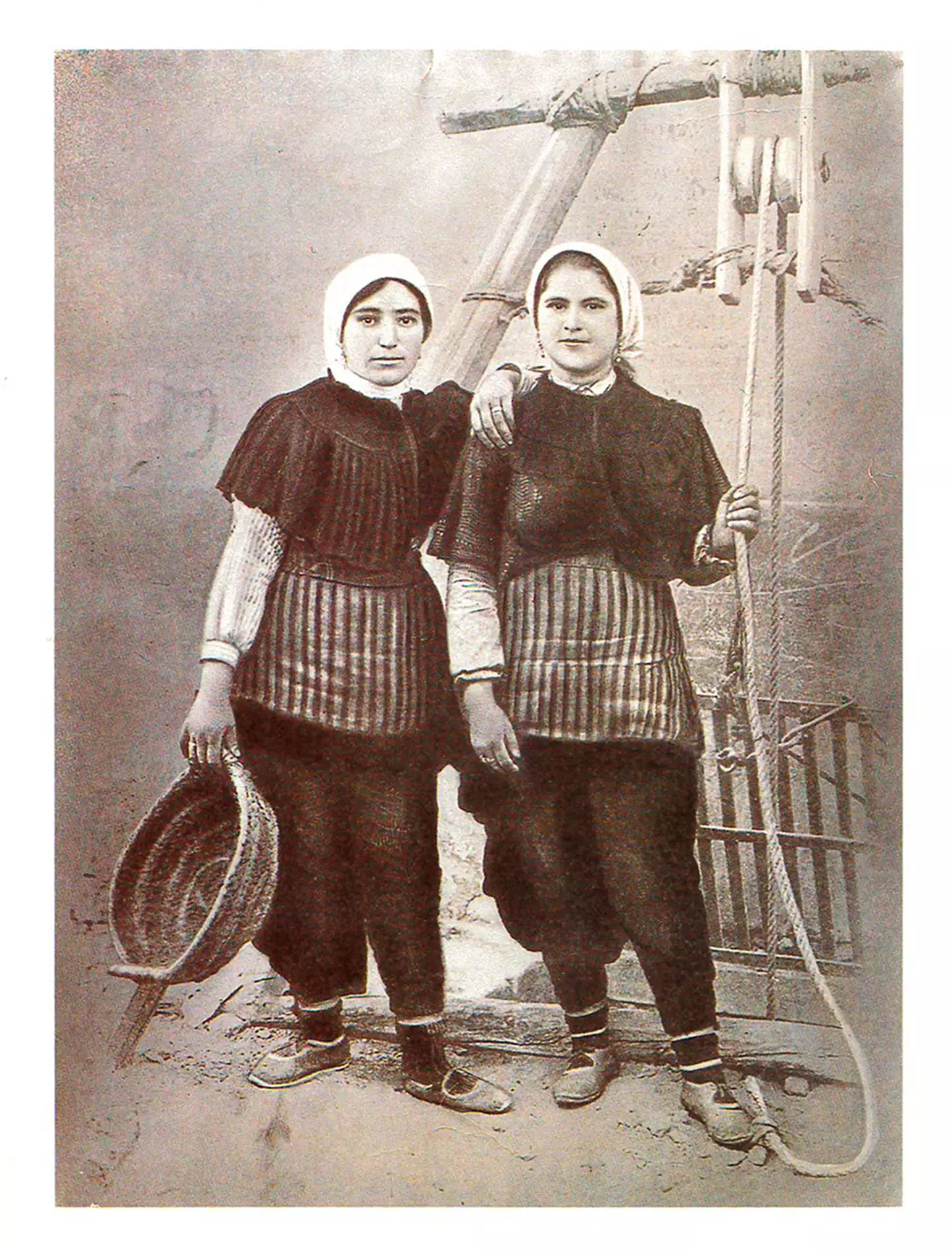
Vintage postcard: "Tomelloso. - Types of working women":
March is the month of the fight for women's rights and, to celebrate the date, the town of Tomelloso from La Mancha wants it not to fall into oblivion a curious case, one of the invisible achievements that have been achieved in our country in recent decades and that It took place precisely there, in a place in La Mancha.
According to some historians, It was in this municipality of Ciudad Real that women had the right, for the first time in Spain, to wear long trousers. They only did it during working hours and the reason was their particular wine activity. The city, of about 38,000 inhabitants, boasts of being the world's leading producer of alcohol of wine origin (50% of the area of vineyards in all of Spain is in this area), and it was because of the creation of storage spaces to escape the phylloxera plague that they were born its famous caves, where men and women worked side by side.
“When at the end of the 19th century the mass cultivation of the vine began, Tomelloseros saw the need to build wineries to bottle and store their wines. They then observed that the subsoil of Tomelloso had a thick layer of tosca that allowed them to caves without vaults, without columns or supports of any kind, so they decided that their cellars were underground”, writes Miguel Antonio Maldonado Felipe in his article The picturesque female work clothing in Tomelloso between centuries.
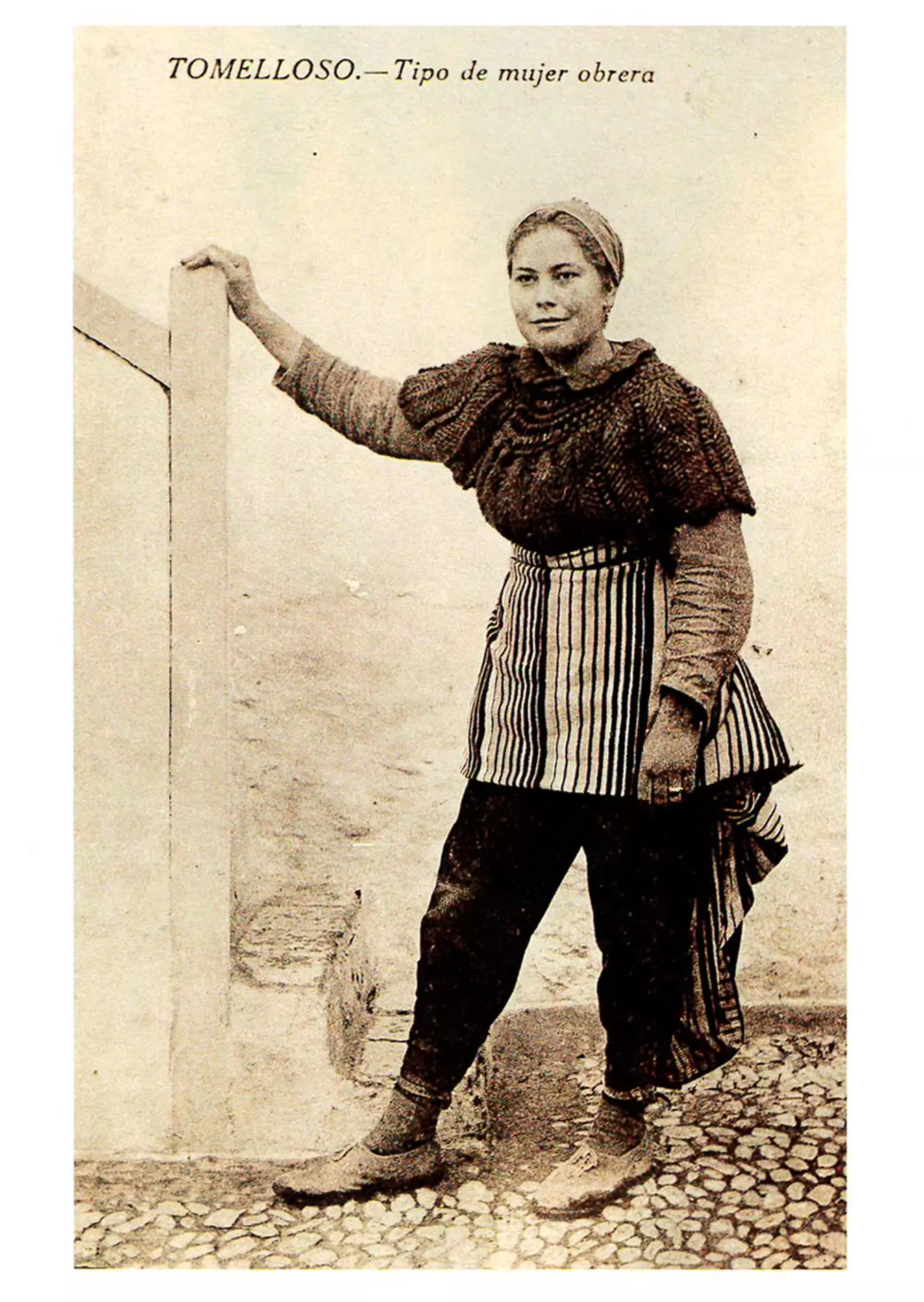
Working woman from Tomelloso, 1910. Postcard from Osuna Hermanos.
In addition to field work, both in cultivation (weeding, pruning, etc.) and harvesting (harvesting, harvesting and others), in which women have traditionally contributed, “The implementation and promotion of the wine industry in the last third of the 19th century generated specifically female trades in Tomelloso, complementary to certain male occupations in wineries and liquor stores, as were that of liera or that of terrera, both notorious examples of the feminine clothing particularity”, continues in this analysis of clothing.
“The first –continues the author– were those in charge of removing the lees or mothers of the wine, solid substances (especially yeast residues) accumulated in the bottoms of the jars after its fermentation, elaborating with them: «some balls that were dried and sold for the chemical industry. (…) The terreras were in charge of removing the earth in the excavation of the caves and wells”.
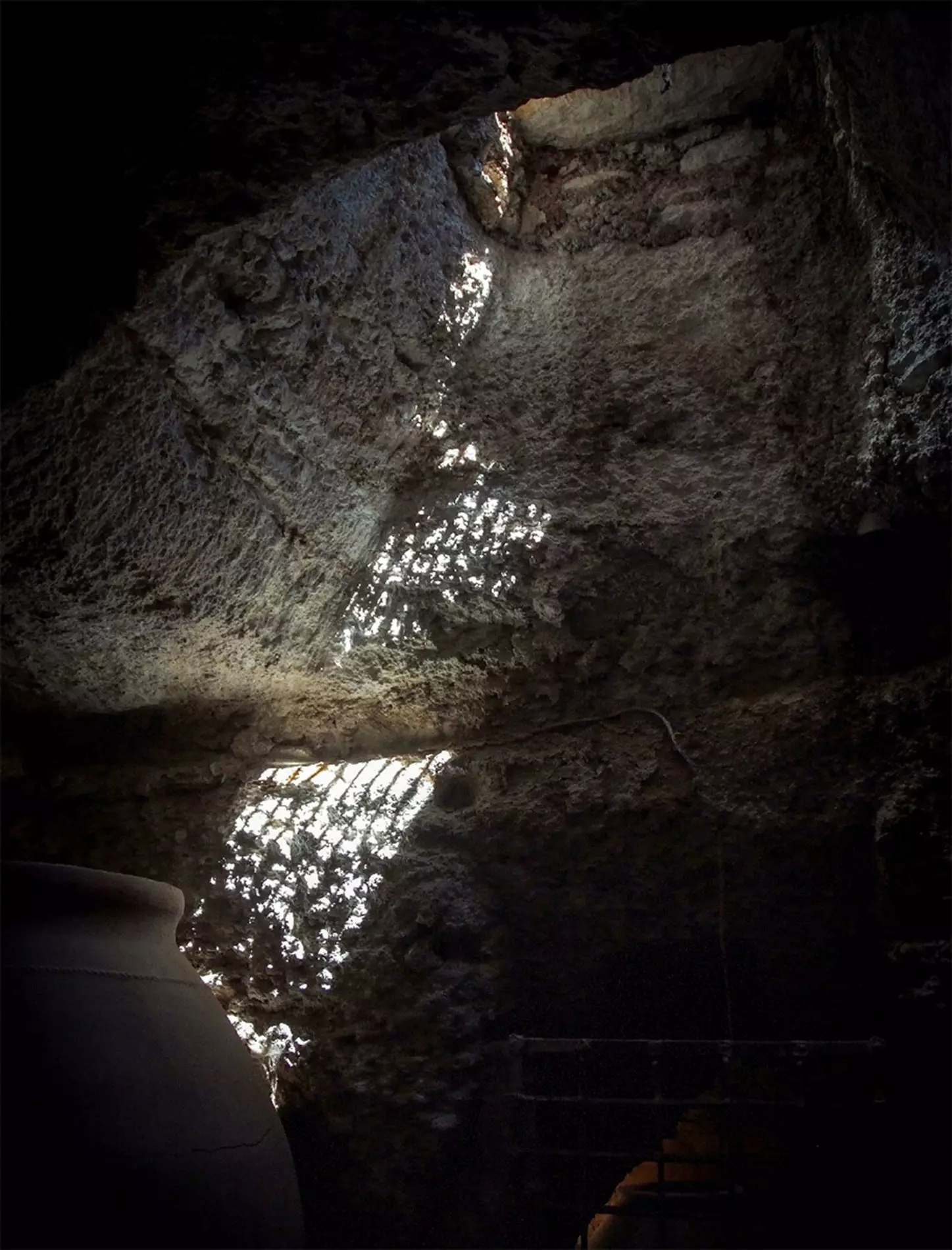
Lumbrera in a cave in Tomelloso, the part of the cave that leads to the outside.
While the male workers they dug the earth in the depths, the terreras were dedicated to extracting it with a lathe or 'machinillo' from the caves from the luminaries, the part that led to the outside and that it served to give light and produce ventilation in the interior, they explain to us from the Tomelloso town hall. “This process promoted and encouraged women to wear long pants during the tasks, with the aim of being more protected while carrying out their work”, they say, and refer to a very specific protection: that of men not being able to see their underwear from their position, lower than them.
Why is this historical curiosity relevant, immortalized painters such as Antonio López Torres, and why does Tomelloso pay homage to this fact, in his square, with a representation that recalls these advanced women? As Maldonado explains, "Clothing has traditionally maintained two functions: one aesthetic, and another utilitarian or functional, dedicated to the protection of the body against environmental phenomena." The relationship between both facets and a third, that of sociopolitical vindication, They are an interesting object of study.
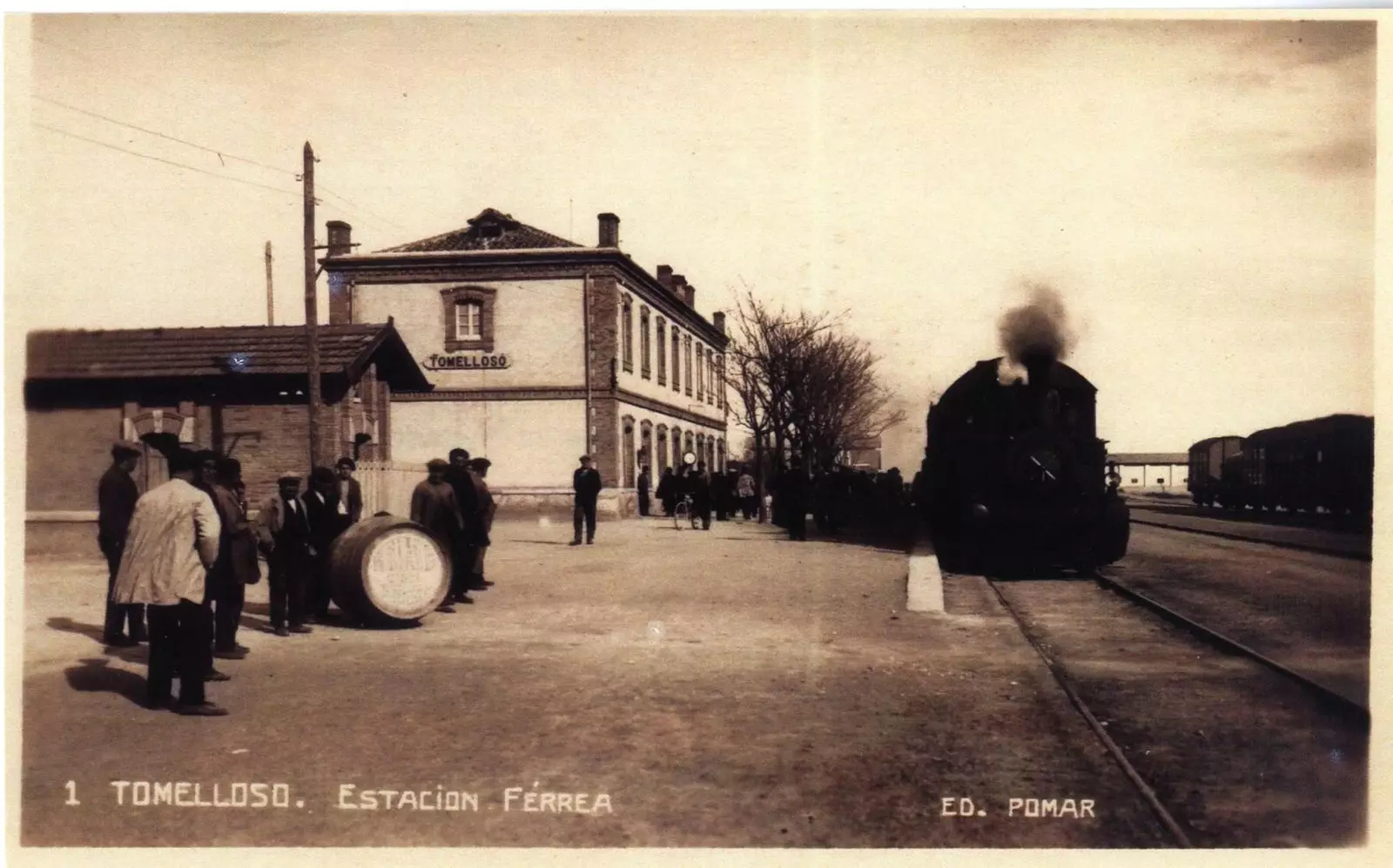
Tomelloso railway station in the early 1930s.
“The pants, as a male garment with two legs in charge of covering from the waist to the ankles, It was introduced in the Iberian Peninsula by the French armies, to the detriment of the short shorts”, Maldonado notes. The French revolution defined trousers as a male garment from the waist down – the French Democratic Assembly decreed in 1789 the abolition of class differences in terms of dress, forcing all men to wear this garment – and in Spain at the beginning of the 19th century, despite the general opposition to everything French, the general use of trousers was imposed in male attire.
In the La Mancha region, as in other rural areas, this trend came later. “Traditionally, people have been identified as natives of a certain region, province or region due to their clothing and characteristic adornments. (...) And it is that the clothing is always and in each case adapted to the uses and customs of those who wear it”, writes Maldonado. And add in your article a publication of the magazine Blanco y Negro, from 1896, which read as follows: “This town offers the particularity of being perhaps the only one in Spain where women wear pants, demonstrating with this manly garment that how men work and that with them they alternate in the hard tasks of the field”.
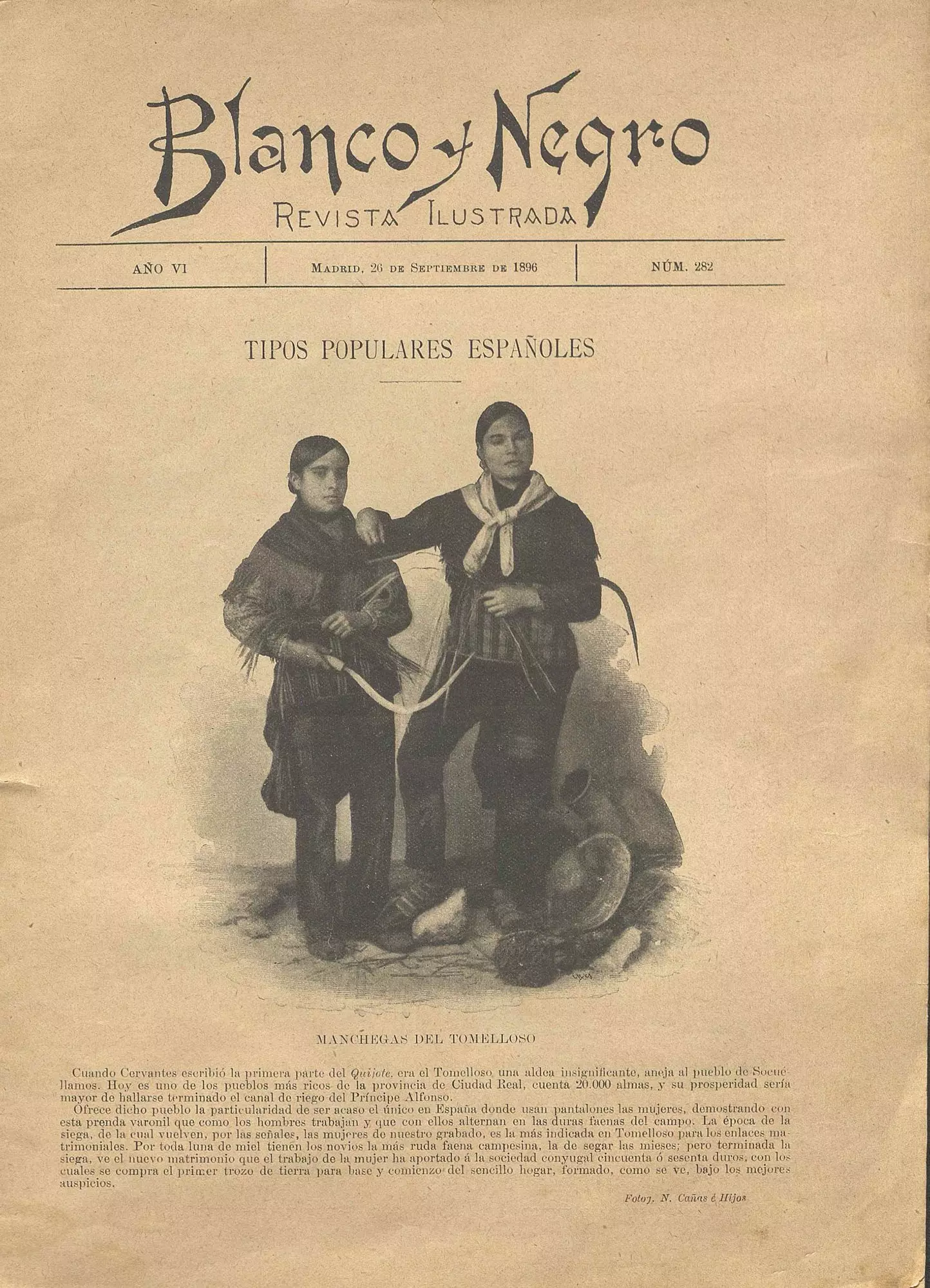
Article about the women of Tomelloso and their clothing, from 1896.
These pants were striped corduroy and dark colors, brown or black, the winter ones being lined, girded to the calf at the bottom of the leg by means of leather, esparto or hemp strips. “The fact of wearing pants does not exempt women from wearing the skirt or petticoat, which is gathered at the waist, with the front part arranged as a handle allowing the entire flight to fall hanging on its rear part to facilitate the work (...). Made of wool with vertical stripes of different colors, the skirts do not have any type of adornment or embroidery because they are work garments (...) only as a reminder of the gender and condition of its carrier”.
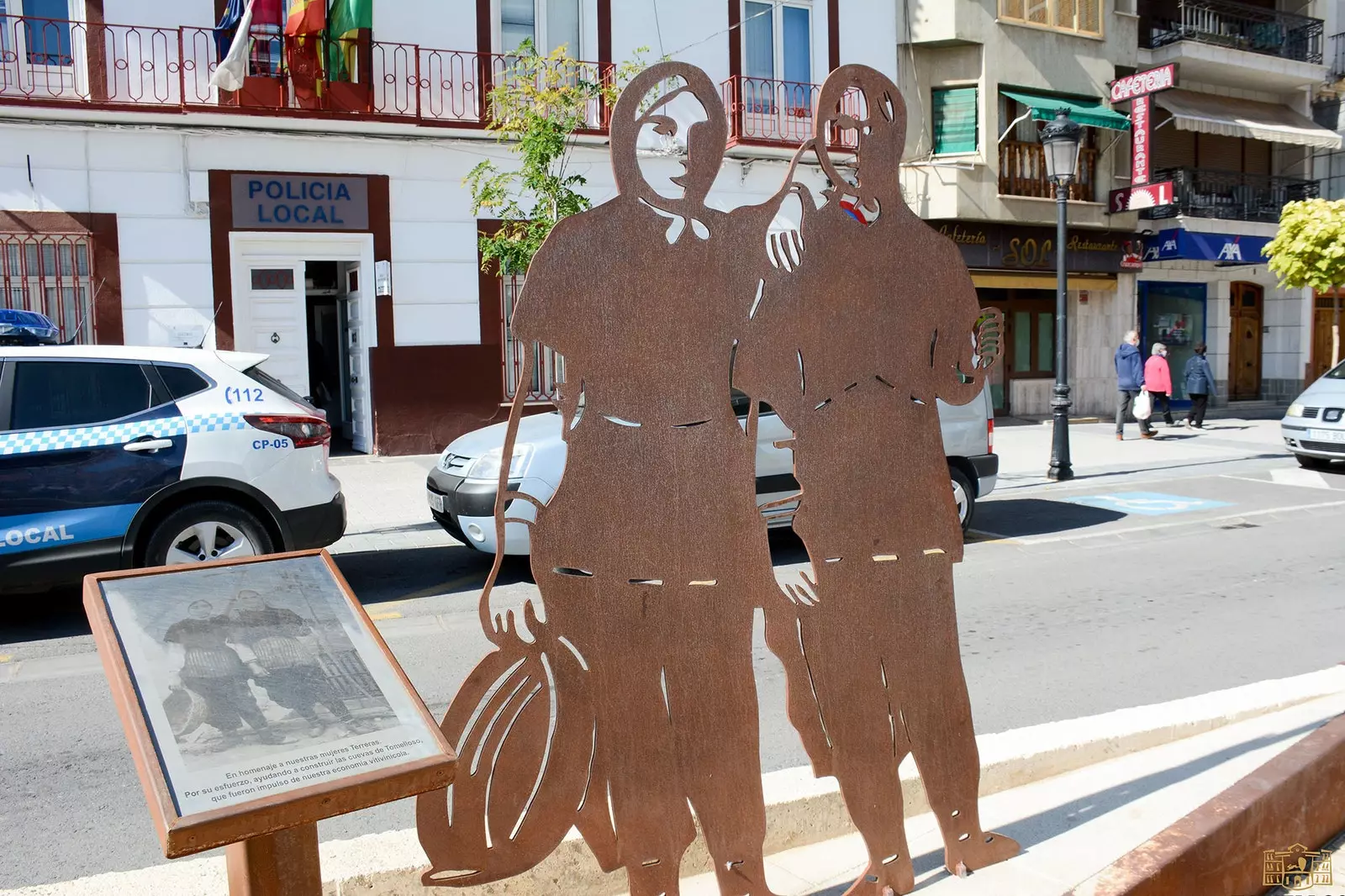
Monument to the terreras, in the Plaza de España in Tomelloso.
A LOOK AT THE HISTORY OF FASHION (AND TRAVEL)
As Maldonado says, changes in clothing produced over time have generally been motivated by their own evolution It occurs in all kinds of societies. “The rural environment has traditionally been reluctant to changes in clothing, accentuating this aspect more in women, given the inherited modesty, in addition to the conditioning of a social and religious nature”.
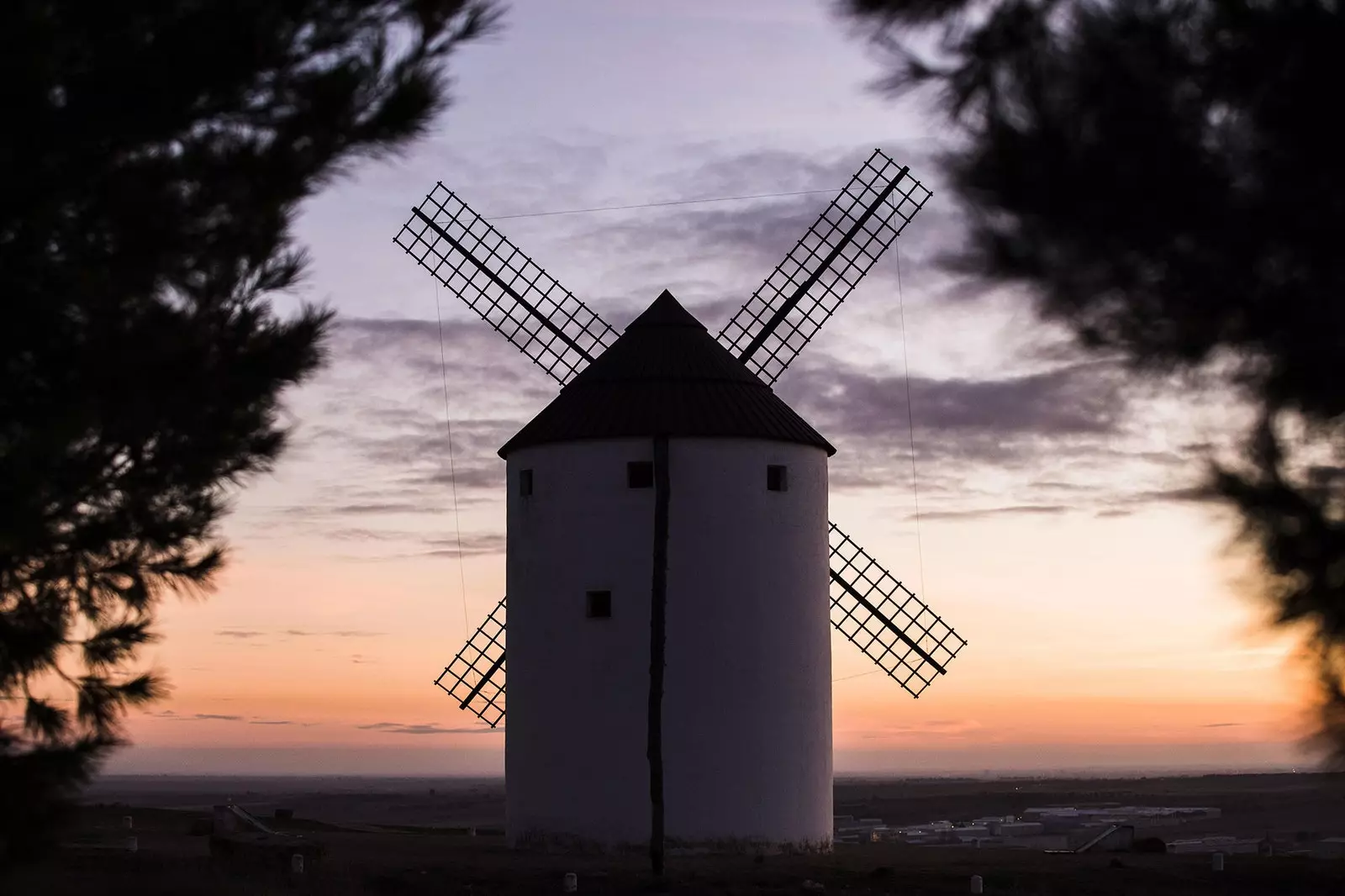
Windmill in Castilla La Mancha.
Like him, we It is surprising that the use of pants by women from Tomellos was not exported to other areas of La Mancha, perhaps due to the isolation of this town, even after the arrival of the railway. “With industrial progress and the evolution of transport and communications, Little by little, popular costumes and clothing ceased to reflect the customs of each place. However, contrary to what might seem, It was this same progress that led the women of Tomellos to partially change their work clothes, turning it into an element of their contemporary idiosyncrasy”.
Other cases similar to this have been that of the mining companies of Wigan, in England (a scandal in Victorian society, which was not so much scandalized by the conditions of the workers as by their clothing) or that of the working girls of World War I. After the Second World War, With the incorporation of women to work, the pants were accepted as an informal feminine garment, to make the jump to Haute Couture in 1964 at the hands of André Courrèges, as Esperanza García Claver, exhibition curator and cultural manager expert in fashion, reminds us.
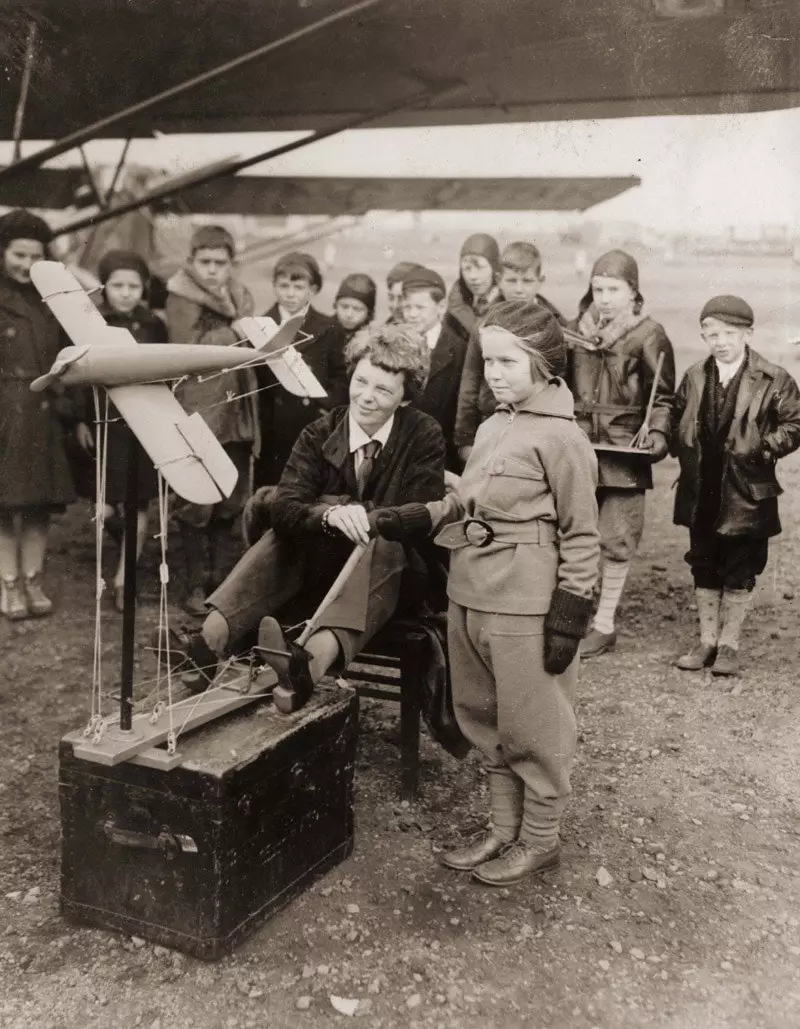
Amelia Earhart in the middle of an aviation class for her youngest fans
For the author, it is very interesting to reflect on the use of trousers for work, practical, utilitarian, a motivation that is often lost sight of. “I am passionate about the issue of emancipated women travelers”, she confesses to us. “Those who went further, like Amelia Earhart (1897-1937), that wonderful woman who in the 30s disappeared in the Pacific trying to make that first air trip around the world. It is little known that she had her own eponymous fashion house, Amelia Earhart Fashions, dedicated to practical clothes for an active life. There are wonderful photographs of her that we have engraved in her memory, with her pilot's jacket, her pants, her very, very short hair... she was a pilot, she didn't dress like that to claim something but because of her profession. Nor do we know for sure the objective of it, it could be analyzed from the point of view that, beyond feminism or aesthetics, it was about practical clothing for a specific function”.
In the 1920s and 1930s, women already wore pants, Esperanza reminds us, but its use was exclusively for the beach and the house, in an informal and sporty way. Pants suits came into use in the 1960s and 1970s. “Amelia passed away in 1937, and her collection was launched in 1933 in New York, sold at Macy's, and at several warehouses around the US, although due to the Great Depression it was a difficult time. If we see the photos, some published in Vogue, we can see that they were feminine but comfortable garments. Besides, Amelia had no doubt that the patterns were in the magazines so that the women could make the designs themselves”.
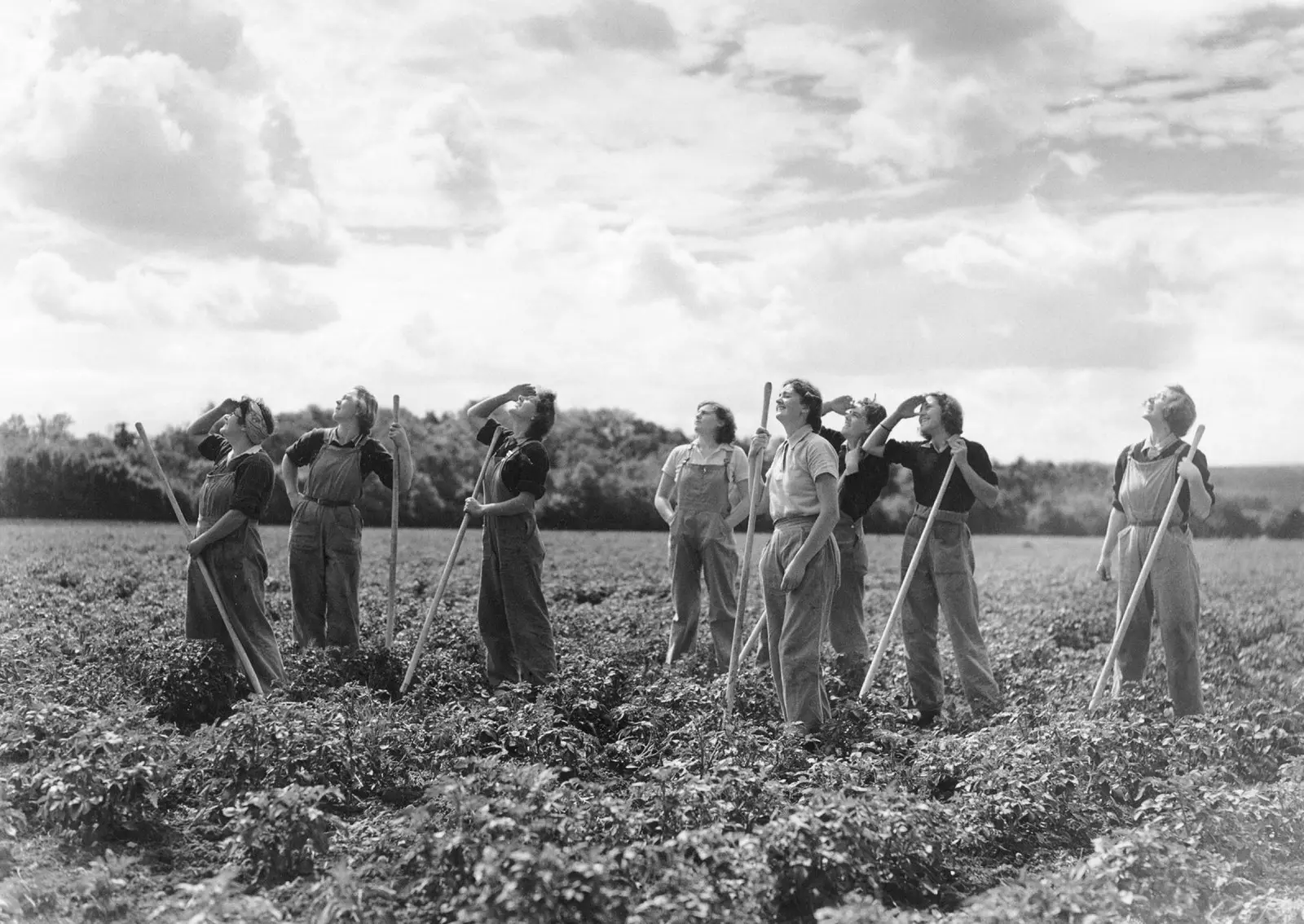
English farm workers look at fighter planes in 1941.
FROM THE FUNCTIONAL TO THE REVINDICATIVE
A second illustrious woman that Esperanza brings up to analyze the use of pants by women in history is Ágatha Christie (1890-1976). “They are contemporaries and I just finished reading the fascinating biographies of her. Christie traveled to Egypt, he was in 1927 in Puerto de la Cruz, in Gran Canaria... she used to surf in the islands, there are no photos of her practicing this sport in Spain but there are in other places. And seeing the images you sense that she was wearing those clothes for simple and plain practicality, for her lifestyle.”
As we said, it was already in the 60s when, when women joined working life, its use became widespread. Then came the 80s, the Armani boom in the 90s, Calvin Klein's minimalism... "We could also talk about Jackie Kennedy, how she made that significant leap in her style as first lady." to one created by herself, already widow of Onassis. She fascinates me at that stage, when she joins Viking Press and Doubleday as an editor. The image of her was glamorous but close, modern, casual, active life, independent woman. She embodies like nobody else this New York woman in a wool sweater and pants with simple cotton T-shirts and flat shoes”.
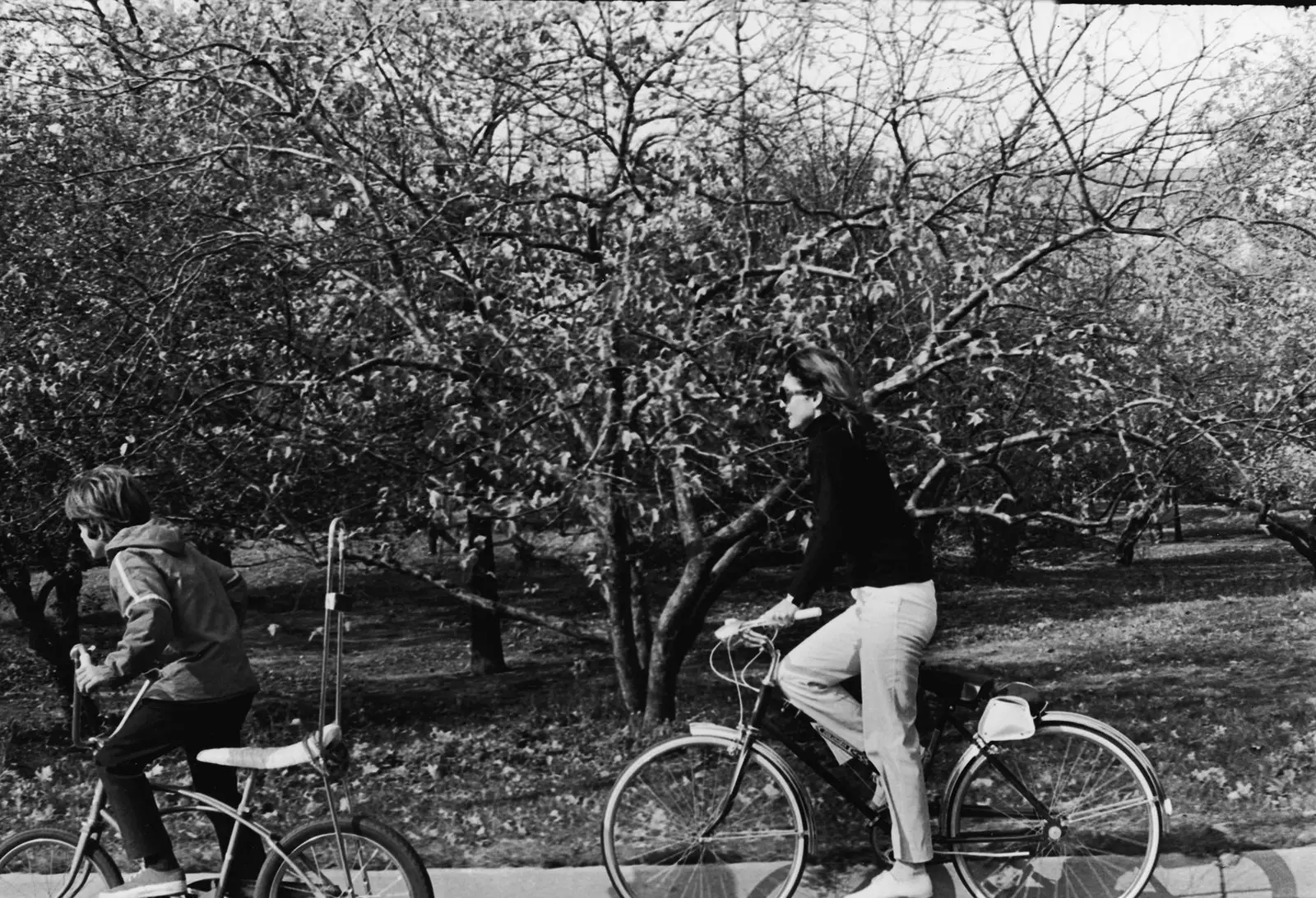
Jacqueline Kennedy and her son, John F. Kennedy Jr., on a bike ride through Central Park in 1970.
A fresh and stylish image that the paparazzi Ron Galella captured on numerous occasions, riding a bike through Central Park, for example. “There is a super interesting leap there and a very clear evolution –says Esperanza–. Not because she wants to claim anything, but for practical reasons entirely. It is a chapter in the history of fashion, which also has to do with the entire May 68 revolution, where the pants began to have another meaning, becoming a symbol of equality of the sexes”.
"Let's remember that the suffragettes, at the beginning of the 20th century, did not wear pants -says Esperanza-, Tomelloso reminds us that the use of trousers has also had a purely practical meaning”. And he reminds us of these words by Geneviève Antoine Dariaux, from her Guide to Elegance, written in the 1950s: "Men have changed singularly through the centuries, finally accepting that women have as much right to wear pants as they do, what a sacred privilege they had never enjoyed, not even with Joan of Arc."
Esperanza points out another curious fact, and that is that It was the interest in the space race that existed in the 1960s that led designers to experiment with new silhouettes and fabrics, something that also promoted the use of this garment. By the 70s it was already widespread among females. The successes of Yves Saint Laurent, Paco Rabbanne... and many others would come.
But let's not forget that when the tomelloseras dressed them it was something totally exceptional. At that time, in 1850, the painter Rose Bonheur had to request a permit in the neighboring country to be able to wear pants – “Permission de Travestissement” –, something that she obtained along with 11 other women, including George Sand.
